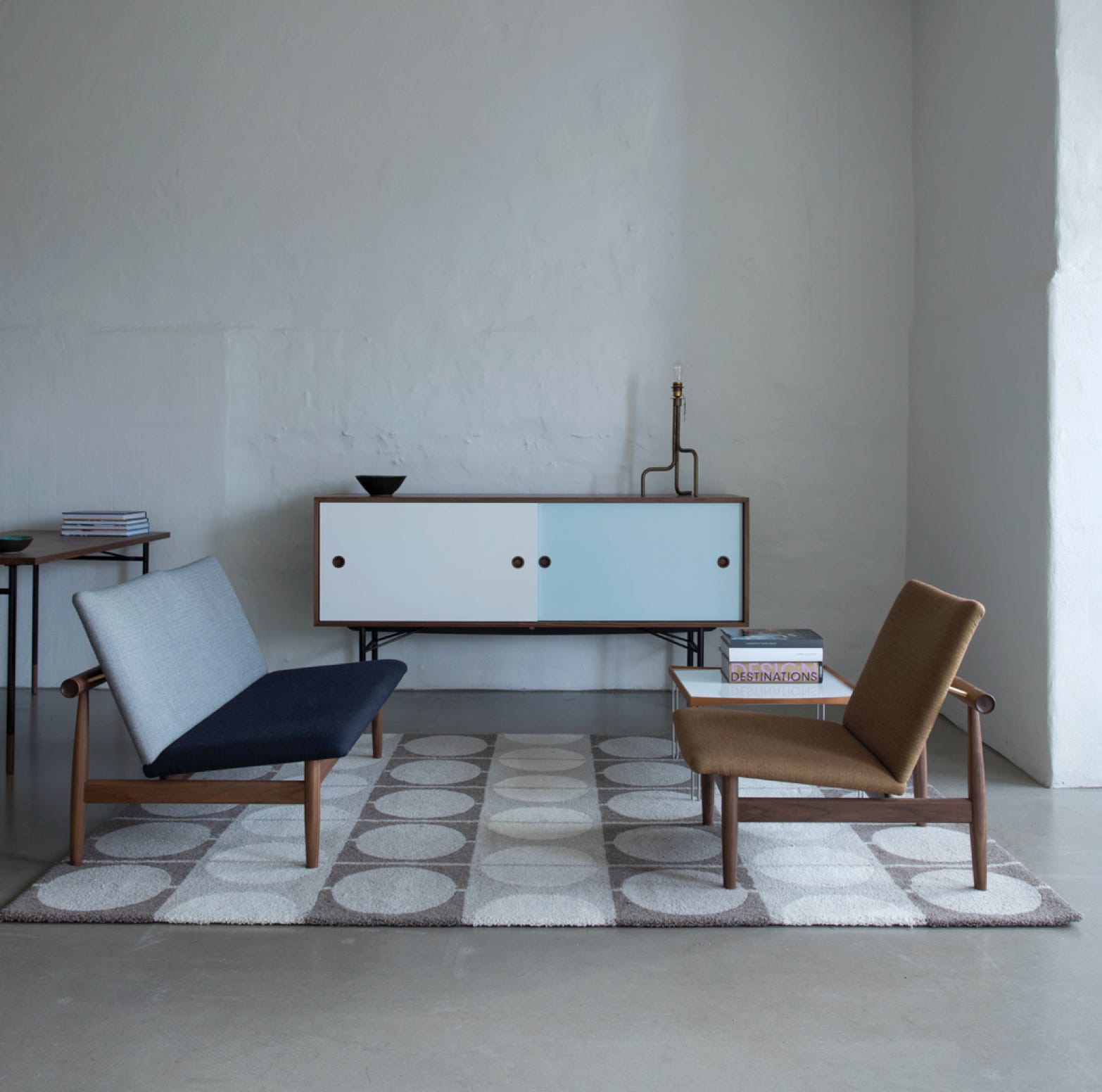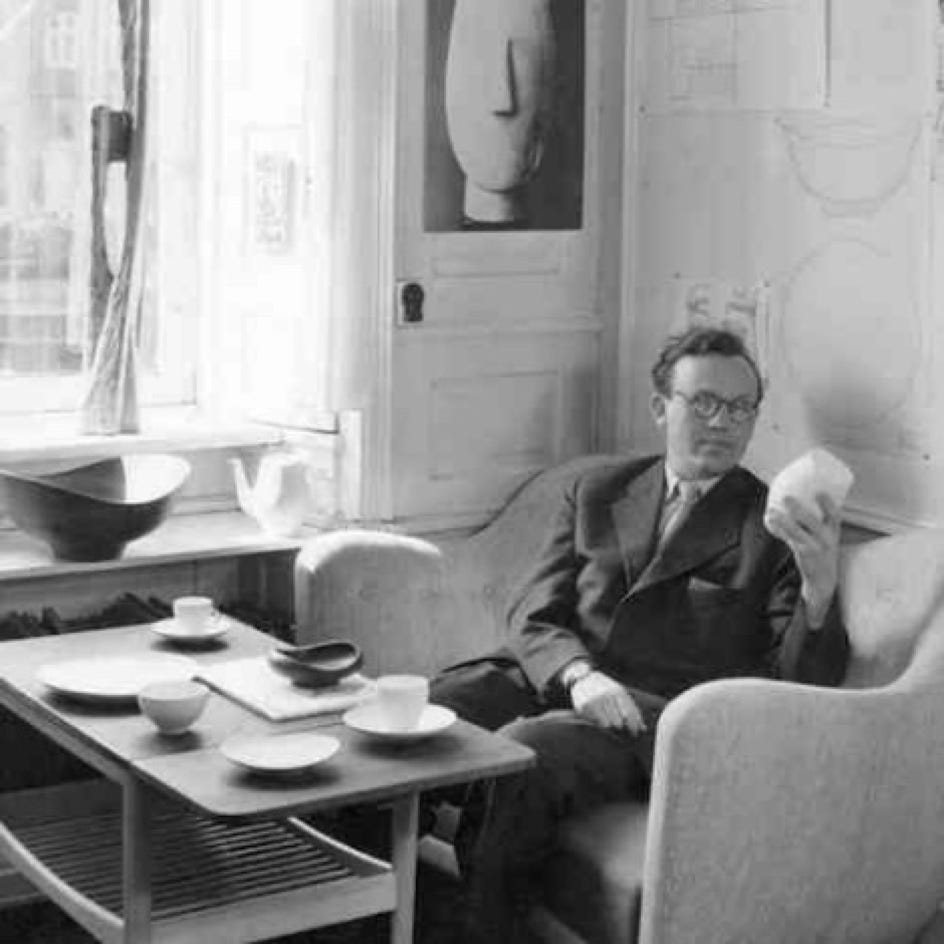15% off with DESIGN15

In the 1960s, Finn Juhl designed a series of rugs for the Danish carpet manufacturer Vittrup, including the Circle rug. However, none of these were ever produced.
House of Finn Juhl wanted to offer a wide range of Finn Juhl designs, so it made sense to finally release these carpets with their characteristic circular patterns, inspired by the Swinging Sixties. Designers such as Verner Panton subsequently drew inspiration from these patterns.
Circle Undyed rugs are made from natural wool, undyed and hand-tufted. The three neutral versions offer a calm and warm contrast with Finn Juhl's bold furniture. They are monochrome and come in three shades.
The rugs come in two categories, coloured and monochrome, available in two sizes and seven different colour combinations.
Technique and materials Colourful, hand-tufted rugs in wonderfully dense 100% looped wool.
grey / black
yellow / orange
175 x 175 cm
175 x 245 cm
175 x 175 cm
175 x 245 cm
blue / navy
beige / nature
175 x 175 cm
175 x 245 cm
175 x 175 cm
175 x 245 cm
Technique and materials Monochrome rugs in natural, undyed, hand-tufted wool. All three rugs are made from 100% undyed yarn, spun from pure, virgin New Zealand wool.
chalk
sandstone
175 x 175 cm
175 x 245 cm
175 x 175 cm
175 x 245 cm
clay
175 x 175 cm
175 x 245 cm
Dimensions 175 x 175 cm
Dimensions 175 x 245 cm
Finn Juhl

As a teenager, Finn Juhl (1912-1989) wanted to become an art historian, having a passion for the fine arts since childhood. His father stopped him and Finn Juhl started architectural studies. Later, when his fame as a designer of furniture acquired, he speaks of himself as an autodidact, in reference to this upset vocation that forced him to walk intellectually on a lonely way. His style owes much to this singular trajectory, with its non academic interpretation of art visible in his work. Finn Juhl started his studies in 1930, a key period which saw the birth of modern design and furniture.
His modern offices in central Copenhagen was greeting his visitors with a huge Japanese fish in paper, symbol of imagination. Rather than thinking in terms of practical construction, Finn Juhl had the mind-set of a sculptor, when he shaped a piece of furniture. In the 1940s and 1950s, this way of working had never been seen before. His ambition was to design furniture with movement and life.
Juhl took pride in making both the structurally supportive elements of the furniture and the seated person look as though they are floating. In some of his chairs, the backrest and the seat are almost invisibly joined, as if they were clouds floating through the room.
In creating his furniture, Finn Juhl worked with two elements: The carrying element, and the carried. He eventually became known for his special ability to separate the bearing parts from the borne. This is one of many examples of how he broke free from conventional working methods and found his inspiration in art.